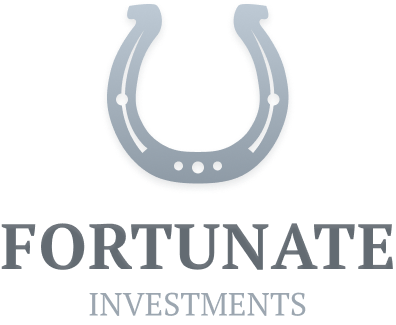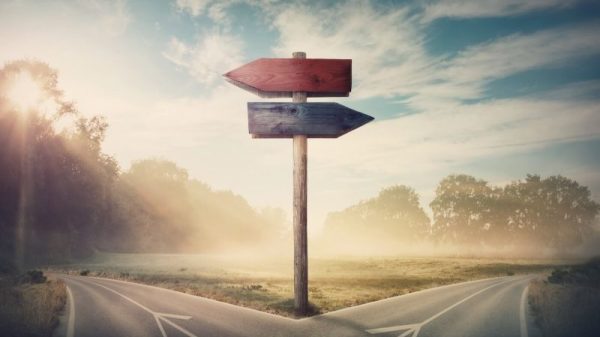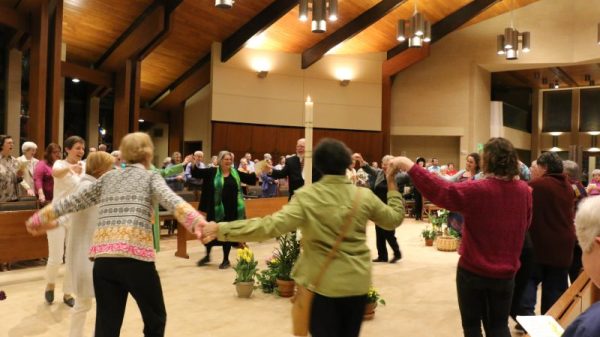Uncertainty has continued in September after August left investors scratching their heads.
In the tech sector, Bitcoin and Ether prices remained rangebound this week on waning investor interest, while Broadcom’s (NASDAQ:AVGO) latest quarterly report, contributed to the cautious sentiment among market participants.
Tesla (NASDAQ:TSLA) also made headlines this week, teasing the release of its full self-driving technology in select markets, while struggling Intel (NASDAQ:INTC) could have a buyer for its design business.
1. September off to a rocky start
On Tuesday (September 3), the S&P Global US Manufacturing PMI posted 47.9 in August, down from 49.6 in July and below 50 for the second consecutive month, while the ISM Manufacturing PMI registered 47.2 percent in August, up 0.4 percentage points from 46.8 percent in July.
While the overall US economy appears to be expanding, indicated by strong GDP growth and rising consumer spending, contraction in the manufacturing sector indicates a potential slowdown in economic growth.
As a result, the markets recorded their biggest daily percentage declines since the August 5 rout. The Nasdaq Composite (INDEXNASDAQ:.IXIC) slid 2.85 percent at the close, the S&P 500 S&P 500 (INDEXSP:.INX) lost 1.83 percent and the Russell 2000 (INDEXRUSSELL:RUT) shed 2.77 percent of its market value.
Key findings from S&P Global Canada Manufacturing PMI also weighed on the TSX/S&P Composite Index (INDEXTSI:OSPTX), revealing reduced output and demand and a modest reduction in employment in Canada.
The TSX lost 1.3 percent, a much softer blow on hopes that the Bank of Canada would lower interest rates for the third time this summer. A rate cut was announced, from 4.25 percent to 4.5 percent, on Wednesday (September 4) morning, while the US Labor Department’s JOLTS report revealed job openings were at a three-and-a-half year low in July, down 1.1 million compared to a year ago. The indexes held relatively steady despite this, with the Nasdaq sliding the most at the opening bell, dragged down by a NVIDIA (NASDAQ:NVDA) stock sell-off that saw nearly 9.5 percent of its value erased in 24 hours after Bloomberg reported that the US Justice Department had issued the company a subpoena following a recent antitrust probe, a story the company later denied.
NVIDIA performance, August 30 to September 6, 2024.
Chart via Google Finance.
Thursday’s (September 5) economic data reading was a mixed bag. While the US services sector showed signs of resilience, revealed by non-manufacturing PMI increasing to 54.5 in August, the ADP National Employment report indicated the labor market continued to cool. The private sector added 99,000 jobs instead of the forecasted 145,000, revealing the lowest hiring rate in three years.
In Canada, the S&P Global Canada Services PMI came in at 47.8 for August, up slightly from 47.3 in July but still below the 50.0 no-change mark. This indicates a continued, albeit slower, contraction in the sector.
Traders were optimistic ahead of Friday’s (September 6) much-anticipated non-farm payrolls report, the Fed’s preferred measure of economic health. The major indexes opened slightly ahead, then dropped after the report showed 142,000 new jobs added instead of the estimated 160,000 and a 0.1 percent decrease in the unemployment rate from 4.3 percent in July. The VIX edged above 22 as worried the economy’s resilience may be waning and that it could struggle to stay afloat until interest rate relief arrives.
In Canada, Statistics Canada’s labor force survey showed a modest 22,000 added jobs last month while the jobless rate increased to 6.6 percent from 6.4 percent in July.
The data paints a complex picture of the health of the economy on both sides of the border. At noon, the Nasdaq Composite was down 2.41 percent, the S&P 500 dropped by 1.57 percent and the TSX Composite was down 1.11 percent.
2. Crypto crash continues into September
The crypto market has been facing challenges since the August 5 rout due to a combination of factors, including investor sentiment, regulatory uncertainty, and macroeconomic conditions. Bitcoin and Ether have experienced recent declines, down 4.2 percent and 6.5 percent, respectively, over the past 7 days as of Friday afternoon.
Bitcoin’s price has experienced sharp corrections at the start of each month in Q3, but prices have stalled in recent weeks due to a lack of demand from retail investors and subdued sentiment surrounding ETFs. Its price has been in a downtrend since reaching US$65,000 on August 25. Reduced miner profitability, accompanied by an increase in mining difficulty, has also weighed down Bitcoin’s price movements.
Ether has not fared much better, brought down in part by declining activity on the Ethereum mainnet. Ether ETFs have also failed to live up to their expectations.
On Tuesday, Bitcoin fell to US$56,160, shedding 2.83 percent of its value in an hour. Ether, which logged its worst monthly performance since 2022 in August, fell by 4.35 percent in the same time period. A brief surge was observed in both currencies shortly after the opening bell on Wednesday, with Bitcoin reaching US$58,393 and Ether jumping to US$2,476, followed shortly by steady declines as the week progressed. Another plunge at midday on Friday sent Bitcoin as low as US$53,304 and Ether to US$2,192, according to CoinGecko.
The recent price action of Bitcoin and Ether reflects a cautious market sentiment. Concerns about a potential US recession are leading investors to reduce their exposure to riskier assets like cryptocurrencies. While there have been brief rallies, the overall trend remains downward, suggesting a ‘sell-on-rise’ mentality among investors.
3. Broadcom’s latest quarterly results fall flat
Broadcom unveiled results for its third fiscal quarter on Thursday, reporting a 47 percent year-on-year increase in revenue to US$13.07 billion — slightly better than the US$13.03 billion expected by analysts.
Adjusted earnings per share also exceeded expectations, coming in at US$1.24, US$0.02 better than the estimate. The company’s board approved a quarterly cash dividend of US$0.53 per share to be paid on September 30.
Looking forward to the next quarter, Broadcom has set its revenue guidance at about US$14 billion. Although that’s 51 percent higher than the year-ago period, the figure fell short of the US$14.13 billion anticipated by experts.
Despite its 47 percent increase in revenue, Broadcom’s revenue from broadband and non-AI networking experienced significant declines in Q3, falling by 49 percent and 41 percent, respectively.
The company’s share price slid by 6.52 percent after Thursday’s close, opening on Friday with a valuation of US$142.86, demonstrating how incredibly high the bar has been set for AI companies.
4. Tesla to launch full self-driving in Europe, China
Elon Musk’s Tesla got a share price boost this week, creating momentum for a company that has lost over 15 percent of its market value year-to-date. While Tesla has encountered problems with its full self-driving technology in the US — including several investigations from the National Highway Traffic Safety Administration — the company teased this week that full self-driving will be coming to Europe and China in the first quarter of 2025.
The firm announced the news on Wednesday night in a post on X, formerly Twitter. Tesla also outlined upcoming enhancements to its AI capabilities, such as eye-tracking integrated with sunglasses and an auto-park function tailored specifically for the Cybertruck; it didn’t specify market availability for most features.
Tesla saw a 6.52 percent bump in its share price on Thursday morning, rising to US$234.08 from the previous day’s close, its highest level since July 31. Shares declined from there, closing the week at US$210.73, up 0.97 percent.
5. Qualcomm reportedly interested in Intel design business
According to Reuters, semiconductor company and major Apple (NASDAQ:AAPL) supplier Qualcomm (NASDAQ:QCOM) is considering acquiring part of Intel’s design business. Intel has so far not confirmed the news.
Intel has been the largest recipient of US President Joe Biden’s Chips and Science Act funding, and has been investing heavily in its AI efforts. Its Gaudi chips are a direct competitor with NVIDIA’s Hopper architecture. Intel’s 18A, a silicon wafer manufacturing process, represents the company’s most advanced chip manufacturing technology, although it has faced development challenges. The 18A system failed to pass recent testing by Broadcom, adding to a series of setbacks this year for the company, whose value has fallen by over 60 percent year-to-date and 11 percent this week.
Intel is also in danger of losing its place in the Dow Jones Industrial Average (INDEXDJX:.DJI).
Intel released its Q2 results on August 1, forecasting Q3 revenue below analyst’s estimates and suspending dividend payments to further fund its chipmaking efforts. The company also said it would be cutting 15 percent of its workforce, sending its shares down a further 24.37 percent in after-hours trading. The company’s share price has stayed largely flat since then, although it saw some improvement after reports it was exploring merger or split options.
CEO Pat Gelsinger is expected to present a plan to Intel investors later in September. Options reportedly being considered include separating its product business from its manufacturing unit and scrapping some factory projects.
Intel fell 2.63 percent on Friday to finish the week at US$18.89.
Securities Disclosure: I, Meagen Seatter, hold no direct investment interest in any company mentioned in this article.























